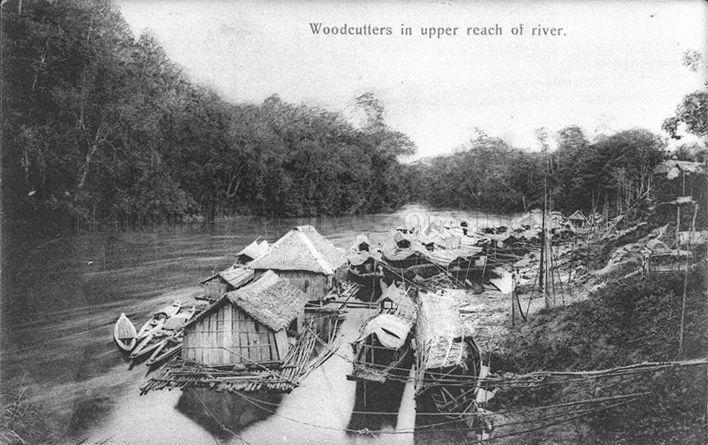 |
| Panoramic view of Sungei Seletar |
The Orang Seletar, a sub-group of the Orang Laut, has made Seletar Island and the surrounding areas their home. Their presence predates Sir Stamford Raffles's founding of Singapore in 1819. It is said that there were "500 Orang Kallang, 200 Orang Seletar, 150 Orang Gelam, 100 Orang Laut, about 30 Malay followers of Temenggong Abdul Rahman and about 30 Chinese".(Talk on Pulau Seking)
Temenggong Abdul Rahman was a "prominent sea-lord of that time. They fished for him and served as boatmen". (Chou: P52)
In the past, the Orang Laut were closely aligned to their rulers, "and were highly appreciate in the royal Malay court". It was reciprocal as the Orang Laut were very loyal to their rulers of the region. (C. Chou: P41)
They were also the front runners of the rulers as they were mobile. They were the people of the seas who knew how to navigate the treacherous seas and islands around that region.
As for the Orang Laut, they were largely linked socially and their relations stretched further southwards towards the islands of Riau Archipelago, currently a part of Indonesia. (Ali: P.276)
 |
| The mangrove provided the Orang Seletar with important sustenance |
 |
| South Coast of Johor looking towards Singapore |
 | |
| Orang Seletar along Sungei Seletar. Taken from: National Archives of Singapore |
Though it was said that the life on boat these boats were nothing but difficult. Staying close to the rivers meant that the dwellers would have to contend with mosquitoes and other irritants.
 |
| A View of Sungei Seletar looking out towards Malaysia |
February 4, 2015 update:
In John Maksic's book called "Singapore & the silk road of the sea", he summarised in English, the Sejarah Melayu or the Malay Annals. In the Annals, it mentioned how the last Sultan of Singapura - Iskandar Syah, escaped from the island after the Majapahit Empire had defeated him. Sultan Iskandar Syah "fled to Seletar, then Muar" and after two years, settled in Melaka in the early 1400s. (2)
Why did Sultan Iskandar escapeed through Seletar? My take is that the Orang Seletar were already there and they might have helped him to escape the Javanese. Also, there might have already been an established path that led the Sultan from Bukit Larangan (Current Fort Canning) to Seletar. The Orang Laut had previously helped Sultan Iskandar to escape from Palembang to Singapura too. (2)
References:
1. C, Chou (2010). The Orang Suku Laut of Riau, Indonesia. Routledge: United Kingdom.
M, Ali. (2002). Singapore's Orang Seletar, Orang Kallang and Orang Selat. Institute of Southeast Asian Studies: Singapore.
2. Miksic, J. (2014). Singapore & the silk road of the sea. NUS Press: Singapore. PP153, 156.

No comments:
Post a Comment